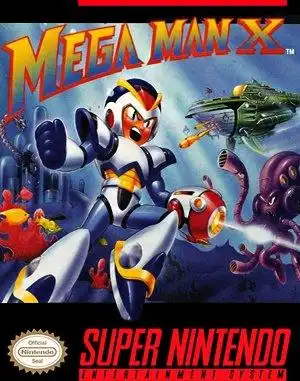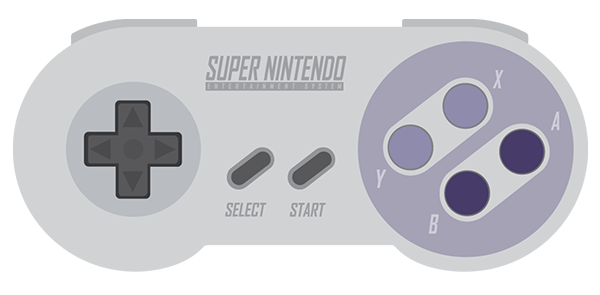Did you ever boot up your Super Nintendo back in the early '90s and feel like you were witnessing the future of gaming? For many of us, that feeling hit hard the moment we pressed start on Mega Man X SNES. It wasn't just another sequel; it was a bold reinvention that took everything we loved about the blue bomber and cranked it up to eleven.
This wasn't your dad's Mega Man. X felt faster, sleeker, and had a whole new attitude. It kept the core run-and-gun platforming but added layers of depth and style that redefined what a 16-bit action game could be. Let's take a trip back and explore why this game is still a cornerstone of retro gaming history.
Stepping into the Future: The Premise
Forget Dr. Wily for a moment. Mega Man X takes place a century after the original series. Humanity and intelligent robots, called Reploids (replicant androids), coexist. But when a powerful Reploid leader named Sigma goes Maverick and starts a rebellion, it's up to the newly discovered, free-willed Reploid, X (the last creation of Dr. Light), and his partner Zero to stop them.
This darker, more serious tone immediately set MMX apart. The stakes felt higher, the world more complex, and the narrative added a layer of intrigue missing from the classic "defeat Wily's robots" formula.
More Than Just Running & Jumping: Core Gameplay & New Moves
While the familiar pattern of choosing a stage, beating a boss, and gaining their weapon remained, Mega Man X SNES introduced game-changing mechanics that felt incredibly fresh:
- Wall Jumping: Suddenly, verticality was key! Scaling walls added a whole new dimension to platforming challenges.
- Dashing: The ability to quickly dash along the ground or in mid-air provided incredible speed and agility, essential for dodging attacks and clearing gaps. This one move fundamentally altered the flow of movement.
- Charged Shots: The Mega Buster could now be charged to multiple levels, unleashing devastating blasts.
These additions weren't just tacked on; the level design and enemy patterns were built around them, making mastering these new moves crucial and immensely satisfying.
Suiting Up: The Revolutionary Upgrade System
One of the biggest draws of MMX was the upgrade system. Scattered throughout the levels were hidden capsules left by Dr. Light, offering permanent enhancements:
- Armor Parts: Helmet (breakable blocks), Body (damage reduction, Giga Crash attack), Legs (Dash ability). Collecting all parts felt like a true power-up, visually changing X's appearance.
- Heart Tanks: Increased your maximum health.
- Sub-Tanks: Allowed you to store energy refills for later use.
Finding these secrets encouraged exploration and added significant replay value. Powering up X wasn't just about getting stronger; it was about gaining new abilities that opened up previously inaccessible areas or made challenging sections manageable.
Mastering the Maverick Stages: Level Design & Secrets
The eight main stages in Mega Man X are iconic. They were expansive, often featuring multiple paths, hidden areas, and challenging platforming segments. What truly set them apart was the concept of stage alterations. Defeating certain Mavericks would impact another stage, changing its layout or removing obstacles, often revealing new secrets like Heart Tanks or upgrade capsules. This interconnectedness was a brilliant touch that rewarded players for experimenting with the boss order.
Facing Down the Mavericks: Bosses & Weaknesses
The Mavericks themselves were a memorable cast, each with a distinct design and personality. From Chill Penguin and Storm Eagle to Spark Mandrill and Armored Armadillo, defeating them and acquiring their unique weapons was the core loop. Discovering and exploiting their elemental weaknesses was key to victory, though skilled players could certainly take them down with just the buster. The final gauntlet against Sigma and his lieutenants provided a tough, but fair, challenge.
The Look and Sound of a New Era
Mega Man X was a visual and auditory treat on the SNES. The 16-bit graphics were vibrant and detailed, with larger, more expressive sprites than the NES era. Explosions and special effects felt powerful. The music? Absolutely legendary. The rock-inspired soundtrack perfectly matched the game's faster pace and edgier tone. Tracks like Storm Eagle's stage, Spark Mandrill's, and the intro theme are etched into the brains of a generation of gamers.
Why Mega Man X Still Holds Up Today
Mega Man X SNES wasn't just a great game for its time; it's a game that stands the test of time. Its tight controls, satisfying movement, rewarding upgrade system, and challenging-but-fair difficulty make it incredibly replayable. It successfully evolved the Mega Man formula while staying true to its action-platforming roots.
Whether you're revisiting it through the Mega Man X Legacy Collection or experiencing it for the first time, the thrill of dashing, wall-jumping, and blasting through Maverick armies is as potent now as it was in the '90s. It's more than a classic; it's a masterpiece that launched a beloved sub-series.
FAQ
Q: Is Mega Man X SNES very difficult? A: It's challenging, especially compared to modern games, but fair. Mastering the new moves (dash, wall jump) and finding upgrades makes it significantly easier.
Q: How is Mega Man X different from the classic Mega Man games? A: It's set 100 years later, features a darker story, introduces new protagonist X, and adds core mechanics like dashing, wall jumping, and a more robust armor/upgrade system.
Q: Can I play Mega Man X SNES on modern consoles? A: Yes! It's available as part of the Mega Man X Legacy Collection on PlayStation, Xbox, Nintendo Switch, and PC.
Q: What is the secret Hadouken? A: It's a powerful, hidden special move you can unlock in the game by meeting specific requirements, referencing the Street Fighter series (also by Capcom).


